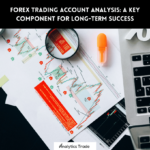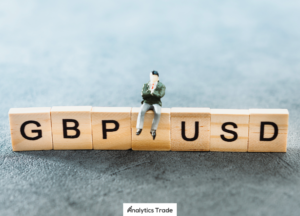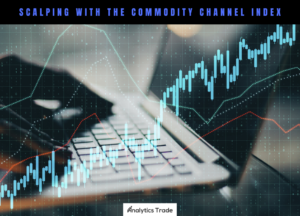In forex trading, there are two major trading analysis methods. These are Fundamental Trading Analysis and Technical Trading Analysis. And the debate about which is better between them has been discussed a lot in the past few years.
In this article, we provide you with our perspective on the Fundamental Analysis and the Technical Analysis rivalry by answering some basic questions.
What is Fundamental Trading Analysis?
In simple terms, the fundamental analysis consists of using a country’s economical evaluation as well as its economic news to determine the value of the country’s currency. Here, the currency’s movements on charts or graphs are not important. Instead, forex traders that use fundamental analysis use data points such as economic news, inflation rate, trade balance, the country’s growth in jobs and gross domestic product, and the likes to determine the strength of the country’s currency.
How do World Events and News affect Trade?
It has been seen that world events, economic news, and every major news have the ability to have drastic effects on the forex market. The effect of world news and major events on the forex market is responsible for the volatility of the forex market. This volatility attracts a lot of new forex traders to forex trading news.
A lot of traders trade forex now because of its high volatility, which can, if carefully studied, make the trader a substantial profit and potentially leave them with a huge loss if not carefully studied.
Here are some world events that can influence forex trade;
1. Political Events
A major and common political event associated with almost every nation is the political elections. An election is perceived as a possible cause of instability and uncertainty by traders. Hence, the volatility rate of any county’s currency increases during the political elections. Although, the volatility rate might not be felt in a great way if the incumbent is the favorite to win and eventually wins the election.
Impromptu or unexpected elections that can result from scandals or a vote of no confidence will ruin the value of any country’s currency.
2. Effects of Natural Disaster
Natural disasters are never good news because the effects on the affected country are usually catastrophic. Natural disasters like earthquakes, floods, hurricanes, forest fires, tornadoes, etc., can cause severe harm to the citizen as well as the country’s infrastructure. Any major damage to infrastructure, which is the backbone of any economy, will consequently have a major effect on the country’s economic value. Hence, a negative effect on the country’s currency.
3. Effects of War
Physical wars have devastating effects on the warring county’s economy because of the loss of lives and destruction of properties and infrastructure, which will, in turn, result in a negative valuation of the country’s economic viability as well as its currency. An example is the effect of Russia’s invasion of Ukraine on the forex market.
Apart from the three events mentioned above, there are also numerous events that positively and negatively affect the currency market. Any unexpected uncertainty that can affect the economic situation will affect the value of the country’s currency.
What is Technical Analysis?
In simple terms, the technical analysis consists of using the repetitive behavior of a currency on a price chart to deduce the future movement of the currency. It is solely based on pattern recognition. In technical analysis, patterns such as the double bottom, triangles, and flags are carefully studied to determine the entry points into the market and the exit points to maximize profit and reduce losses. A technical analysis trader uses the previous knowledge about the movement of a currency on a price chart to predict what or how the future movement of the currency will be.
What are Technical Tools and Trading Oscillators?
Technical tools and trading oscillators are technical analysis tools that read the values between two extreme points, let’s say Point A and Point B, with Point A representing the high and Point B representing the low. When the tool is closer to Point A, the technical analysis trader assumes that the asset or currency is overbought, and when it is much closer to Point B area, the technical analysis trader assumes that the assets or currency is oversold.
Technical tools and trading oscillators can also be trading software employed by technical analysis traders to assist them in recognizing pivotal points in the market. These trading oscillators and technical tools assist technical traders with a clearer insight into the demand and supply of the market psychology.
Trading oscillators and technical tools can also include reliable charting tools that show technical traders when there is a reoccurring trend or pattern in the market. They are also used to generate signals to indicate the most profitable time to buy or sell in the market.
Some examples of the technical tools and trading oscillators include Moving Average, Average Direction Index (ADI), Relative Strength Index (RSI), Stochastic, Commodity Channel Index (CCI), Moving Average Convergence or Divergence (MACD), and the like.
What are the major attributes of technical trading analysis?
- In technical analysis, the price and volume are considered the only two required inputs for depicting the future movement of a currency with the assumption that every other important fundamental factor will reflect in the price. Hence, there is no need to consider any more factors.
- Technical analysts only identify trends and patterns, which are then used to predict the future movement of the currency in the market. They do not see the need to know the real-life event responsible for either the hike or the downward movement of the currency.
- Technical analysis bases its studies on the fact that history tends to repeat itself. Assumption of price solely on the historical movement of a currency could be an inadequate way to model forex trading.
What is the major difference between fundamental analysis and technical analysis?
In fundamental analysis, the intrinsic value of a currency is measured in detail in order to ascertain the movement of a currency in the forex market; WHILE, in technical analysis, there is no need to measure a currency’s intrinsic value. Instead, charts, trends, and patterns are used to determine the future movement of currency.
Final Thoughts
Both fundamental and technical analysis are important and efficient trading methods because they are used in both long-term and short-term trading, respectively. It is important to note that both trading methods can be effectively integrated to achieve medium-term trading with profitable returns.










Excellent article!